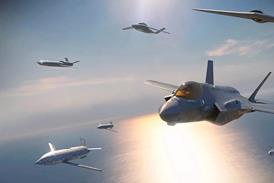NASA and Orbital Sciences have revised the test programme for the X-34 reusable launch vehicle technology demonstrator to reduce risk.
The first airframe, vehicle A-1, will be upgraded for unpowered flight tests from Orbital's Lockheed L-1011 carrier aircraft. The vehicle has completed one captive flight on the L-1011, and a second is scheduled for 31 August.
Flight avionics and hydraulics will be installed in the first airframe and the upgraded A-1A will be used for ground tow tests at NASA Dryden, California, in December. It will also be used for approach and landing flight tests at White Sands Missile Range, New Mexico, early next year.
Originally, the plan was for all flight tests to be conducted with the second and third X-34s, A-2 and A-3. "The revamp takes risk out," says Orbital's X-34 programme manager, Bob Lindberg.
The change will allow Orbital Sciences to complete assembly of the A-2 while flight testing of the A-1A is under way, Lindberg adds. The NASA-developed Fastrac rocket engine will be installed in the second vehicle for ground firing tests at Holloman AFB, New Mexico, late in the second quarter of next year.
Powered flight tests are expected to begin "within months" of static ground tests, according to Lindberg. The first flights will be conducted at Dryden, at speeds up to Mach 2. The A-2 will then be shipped to NASA's Kennedy Space Center in Florida.
The Kennedy flights will reach speeds of up to M4.5 and will be used to demonstrate autonomous crosswind landings and flight through rain, as well as rapid turnaround operations.
The A-3 will complete the rest of the planned 27-flight X-34 test programme from Dryden, reaching speeds of up to M8 and altitudes up to 250,000ft (76,250m).
The X-34 had its first captive flight from the L-1011 TriStar on 29 June, from Edwards AFB, California.
Source: Flight International























